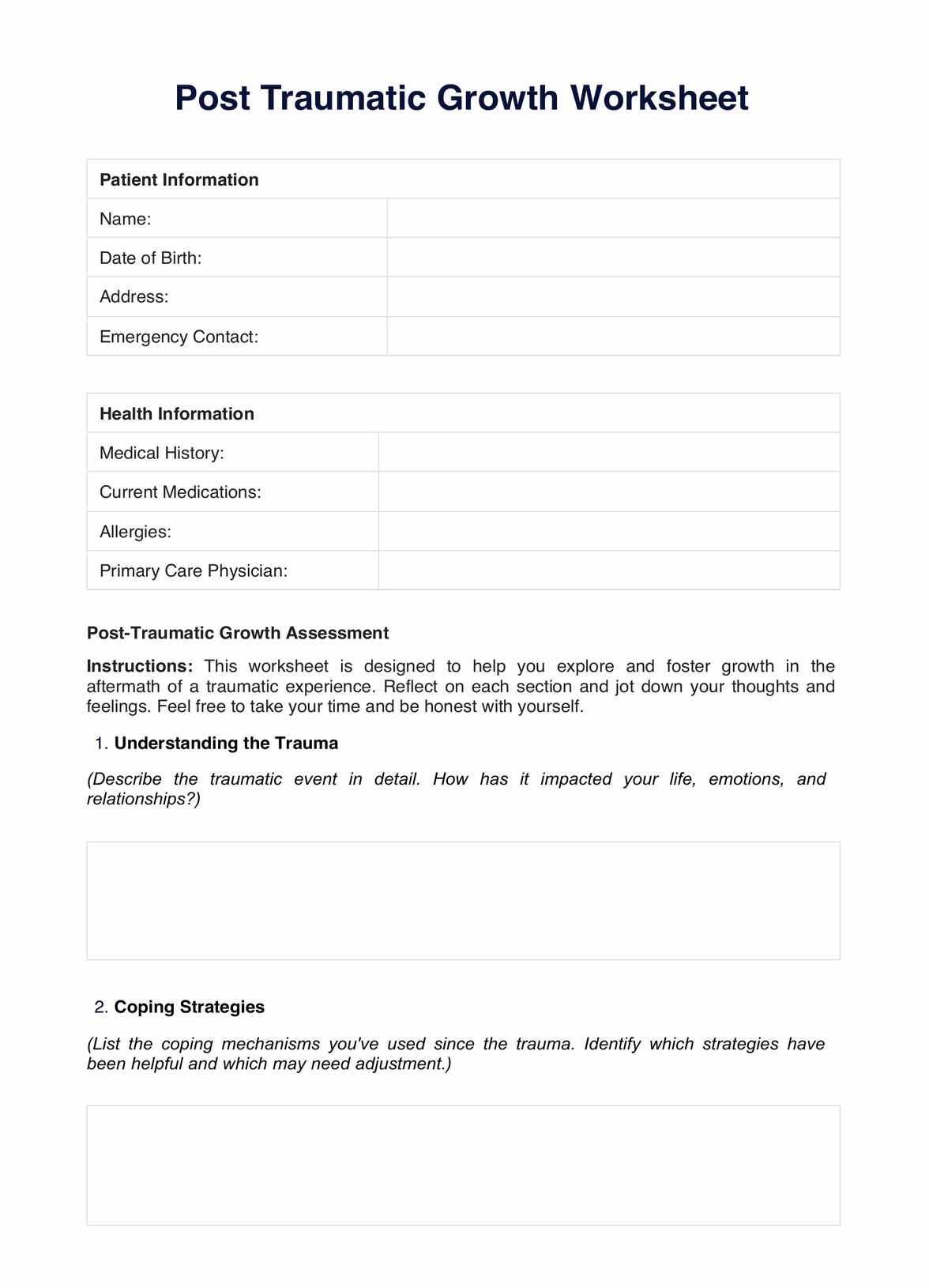The worksheet serves as a guided tool to help individuals reflect on their post-traumatic experiences, identify strengths, and set goals for personal growth.

Post Traumatic Growth Worksheet
Navigate traumatic events with our post traumatic growth worksheet. Foster recovery and find resilience in the aftermath. Start healing today.
Use Template
Post Traumatic Growth Worksheet Template
Commonly asked questions
Mental health professionals can use the Post Traumatic Growth Worksheet as a structured aid to facilitate discussions on the impact of trauma, coping strategies, and collaborative goal-setting.
Yes, the worksheet is adaptable for group therapy or support network settings, fostering a sense of community, shared reflection, and collective progress toward post-traumatic growth.
EHR and practice management software
Get started for free
*No credit card required
Free
$0/usd
Unlimited clients
Telehealth
1GB of storage
Client portal text
Automated billing and online payments











